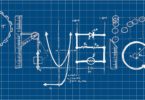Junction Transistor (Electronics) Physics MCQs:
Ques: The phase difference between input and output voltages of a CE circuit is
(a) 0o
(b) 90o
(c) 180o
(d) 270o
Ques: In a PNP transistor working as a common-base amplifier, current gain is 0.96 and emitter current is 7.2 mA. The base current is
(a) 0.4 mA
(b) 0.2 mA
(c) 0.29 mA
(d) 0.35 mA
Related: Boolean Algebra Example Questions
Ques: An oscillator is nothing but an amplifier with
(a) Positive feedback
(b) Large gain
(c) No feedback
(d) Negative feedback
Ques: The emitter-base junction of a transistor is …… biased while the collector-base junction is ……. Biased
(a) Reverse, forward
(b) Reverse, reverse
(c) Forward, forward
(d) Forward, reverse
Ques: In an NPN transistor the collector current is 24 mA. If 80% of electrons reach collector its base current in mA is
(a) 36
(b) 26
(c) 16
(d) 6
Related: Questions and Answers on Mechanical Wave
Ques: In a PNP transistor the base is the N-region. Its width relative to the P-region is
(a) Smaller
(b) Larger
(c) Same
(d) Not related
Ques: A NPN transistor conducts when
(a) Both collector and emitter are positive with respect to the base
(b) Collector is positive and emitter is negative with respect to the base
(c) Collector is positive and emitter is at same potential as the base
(d) Both collector and emitter are negative with respect to the base
Ques: Least doped region in a transistor
(a) Either emitter or collector
(b) Base
(c) Emitter
(d) Collector
Related: Mass Number Questions and Answers
Ques: If l1, l 2, l3 are the lengths of the emitter, base and collector of a transistor then
(a) l1 = l 2 = l3
(b) l3 < l 2 > l1
(c) l3 < l 1 < l2
(d) l3 > l 1 > l2
Ques: The transistors provide good power amplification when they are used in
(a) Common collector configuration
(b) Common emitter configuration
(c) Common base configuration
(d) None of these
Ques: Which of the following is true
(a) Common base transistor is commonly used because current gain is maximum
(b) Common emitter is commonly used because current gain is maximum
(c) Common collector is commonly used because current gain is maximum
(d) Common emitter is the least used transistor
Ques: For a common base configuration of PNP transistor IC/IE = 0.98 then maximum current gain in common emitter configuration will be
(a) 12
(b) 24
(c) 6
(d) 5
Ques: The most commonly used material for making transistor is
(a) Copper
(b) Silicon
(c) Ebonite
(d) Silver
Related: Laws Of Exponents Algebra mathematics Quiz
Ques: In an NPN transistor circuit, the collector current is 10 mA. If 90% of the electrons emitted reach the collector, the emitter current (iE) and base current (iB) are given by
(a) iE = – 1 mA, iB = 9 mA
(b) iE = 9 mA, iB = – 1 mA
(c) iE = 1 mA, iB = 11 mA
(d) iE = 11 mA, iB = 1 mA
Ques: For a transistor, the current amplification factor is 0.8. The transistor is connected in common emitter configuration. The change in the collector current when the base current changes by 6 mA is
(a) 6 mA
(b) 4.8 mA
(c) 24 mA
(d) 8 mA
Ques: In case of NPN-transistors the collector current is always less than the emitter current because
(a) Collector side is reverse biased and emitter side is forward biased
(b) After electrons are lost in the base and only remaining ones reach the collector
(c) Collector side is forward biased and emitter side is reverse biased
(d) Collector being reverse biased attracts less electrons
Ques: Which of these is unipolar transistor
(a) Point contact transistor
(b) Field effect transistor
(c) PNP transistor
(d) None of these
Related: Volume and Surface Area, Free Math Questions
Ques: In NPN transistor the collector current is 10 mA. If 90% of electrons emitted reach the collector, then
(a) Emitter current will be 9 mA
(b) Emitter current will be 11.1 mA
(c) Base current will be 0.1 mA
(d) Base current will be 0.01 mA
Ques: When NPN transistor is used as an amplifier?
(a) Electrons move from base to emitter
(b) Electrons move from emitter to base
(c) Electrons moves from base to emitter
(d) Holes moves from base to emitter
Ques: Consider an NPN transistor amplifier in common-emitter configuration. The current gain of the transistor is 100. If the collector current changes by 1 mA, what will be the change in emitter current
(a) 1.1 mA
(b) 1.01 mA
(c) 0.01 mA
(d) 10 mA






